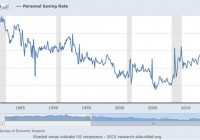Revisiting 10 Asset Allocation Funds Amid Market Turmoil
Earlier this year, I reviewed ten asset allocation mutual funds with a range of strategic designs as an academic exercise for exploring how multi-asset strategies stack up in the real world. Seven of the ten funds post losses for the trailing one-year period through yesterday (Sept. 22), along with one flat performance and two modest gains. One lesson in all of this is that investment success (or failure) is usually driven by two key factors: asset allocation and the rebalancing methodology. For the elite who beat the odds, the source of their success is almost certainly bound up with superior rebalancing methodologies that shine when beta generally takes a beating. Earlier this year, I reviewed ten asset allocation mutual funds with a range of strategic designs as an academic exercise for exploring how multi-asset strategies stack up in the real world. Not surprisingly, the results varied, albeit largely by dispensing a variety of gains as of late-February. But that was then. Thanks to the recent spike in market volatility (and the slide in prices), a hefty dose of red ink now weights on these funds. Seven of the ten funds post losses for the trailing one-year period through yesterday (Sept. 22), along with one flat performance and two modest gains. This isn’t surprising considering the setbacks in risky assets over the last month or so. But the latest run of weak numbers is also a reminder that asset allocation comes in a variety of flavors and the results can and do vary dramatically at times. One lesson in all of this is that investment success (or failure) is usually driven by two key factors: asset allocation and the rebalancing methodology. Of the two, rebalancing is destined to be a far more influential force through time. Assuming reasonable choices on the initial asset mix, results across portfolios – even with identical allocation designs at the start – can and will vary by more than trivial degrees based on how the rebalancing process is executed. And let’s be clear: it’s no great challenge to select a prudent mix of asset classes to match a given investor’s risk profile, investment expectations, etc. Tapping into a solid rebalancing strategy (tactical or otherwise) is a much bigger hurdle. But at least there’s a solid way to begin. For most folks, holding some variation of Mr. Market’s asset allocation strategy – the Global Market Index, for instance – will do just fine as an initial game plan. The choices for tweaking this benchmark’s design will cast a long shadow over results if the weights are relatively extreme – heavily overweighting or underweighting certain markets, for instance. Otherwise, the details on rebalancing eventually do most of the heavy lifting, for good or ill as time rolls by. With that in mind, we can see that most of our ten funds have had a rough ride recently. The reversal of fortune has been especially stark for the Permanent Portfolio (MUTF: PRPFX ) this year. After leading the pack on the upside in April and May (based on a Sept. 23, 2014 starting point), the fund has since tumbled and suffers the third-worst slide among the ten funds for the trailing one-year return. (click to enlarge) At the opposite extreme, we have the Bruce Fund (MUTF: BRUFX ) and the Leuthold Core Investment Fund (MUTF: LCORX ), which are ahead by around 3.5% for the past 12 months. Those are impressive results vs. the rest of the field. Note the relative stability for BRUFX and LCORX over the past month or so. Is that due to superior rebalancing strategies? Or perhaps the funds beat the odds by concentrating on asset classes that fared well (or suffered less) in the recent and perhaps ongoing correction? We can ask the same questions for the other funds in search of reasons why performance suffered. In any case, the answers require diving into the details. A good start would be to run a factor-analysis report on the funds to see how the risk allocations compare. Another useful angle for analysis: deciding how much of the performance variations are due to what might be considered asset allocation beta vs. alpha. A possible clue: BRUFX’s longer-run results are also impressive while LCORX’s returns are relatively mediocre in context with all of the ten funds, as shown in the next chart below. Is that a hint for thinking that BRUFX’s managers have the golden touch in adding value over a relevant benchmark? Maybe, although the alternative possibility is that the fund is simply taking hefty risks to earn bigger returns. In that case, the risk-adjusted performance may not look as attractive. Perhaps, although several risk metrics (Sharpe ratio and Sortino ratio, for instance) look encouraging and give BRUFX an edge over LCORX, according to trailing 10-year numbers via Morningstar. (click to enlarge) Meanwhile, keep in mind that an investable version of the Global Market Index – a passive, unmanaged and market-weighted mix of all the major asset classes – is off by roughly 5% for the trailing one-year period. That’s a middling result relative to the ten funds, which isn’t surprising. In theory, a market-weighted mix of a given asset pool will tend to deliver average to modestly above-average results vs. all the competing strategies that are fishing in the same waters. In other words, most of what appears to be skill (or the lack thereof) is just beta – even for asset allocation strategies. But there are exceptions. That doesn’t mean that we shouldn’t customize portfolios or study what appear to be genuine advances in generating alpha in a multi-asset context. But as recent history reminds once again, beating Mr. Market at his own game isn’t easy. But for the elite who beat the odds, the source of their success is almost certainly bound up with superior rebalancing methodologies that shine when beta generally takes a beating.
